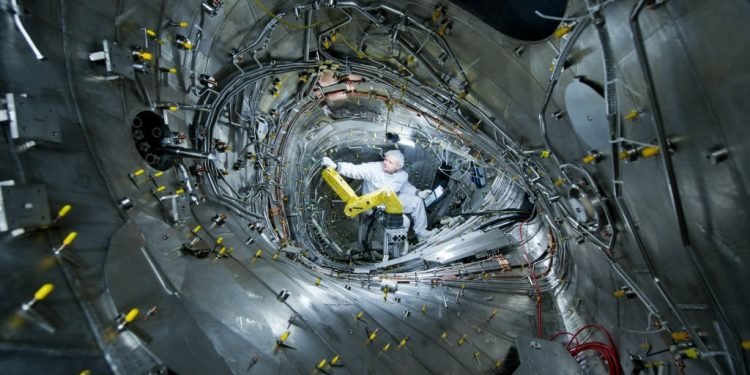US scientists have announced a significant development in the battle to re-create nuclear fusion.
Since the technique holds the promise of a potentially endless source of renewable energy, physicists have been working on it for decades.
Researchers said on Tuesday that they have successfully surmounted a significant challenge by generating more energy from a fusion experiment than was put in.
However, according to scientists, it will be some time before fusion can power homes.
The experiment was conducted at the Lawrence Livermore National Laboratory’s (LLNL) National Ignition Facility in California.
The “holy grail” of energy generation is said to be nuclear fusion. The Sun and other stars are powered by this process.
It functions by fusing two pairs of light atoms; this “fusion” generates a lot of energy.
It is the opposite of nuclear fission, which involves the splitting apart of heavy atoms. The method now utilized in nuclear power plants is fission. However, the procedure also generates a lot of waste that emits radiation for a very long time. It needs to be stored safely because it can be harmful.
Far more energy is produced via nuclear fusion, and only trace amounts of radioactive waste are left behind. Additionally, and more significantly, the process doesn’t emit any greenhouse gases, preventing it from causing climate change.
However, one of the difficulties is that to force and maintain the atoms together in fusion, extremely high temperatures and pressures are needed. No experiment has yet been able to generate more energy than was required to make it operate.
They have only produced a modest quantity of energy in this experiment, hardly enough to boil a few kettles. But it has a significant meaning.
A fusion-powered future is one step closer to becoming a reality. However, this has a long way to go before becoming a reality.
This experiment demonstrates that science is valid. It needs to be replicated, and polished, and the quantity of energy it produces will need to be greatly increased before scientists can even consider scaling it up.
The expense of this endeavor has been in the billions of dollars; fusion is expensive. But overcoming these obstacles will undoubtedly be greatly aided by the prospect of a clean energy source.
California’s National Ignition Facility is a $3.5 billion (£2.85 billion) experiment.
It packs a peppercorn-sized capsule with a microscopic amount of hydrogen.
The hydrogen fuel is then heated and compressed using a strong 192-beam laser.
The laser is so powerful that it can compress the capsule to a pressure greater than 100 billion times that of Earth’s atmosphere while heating it to a temperature of 100 million degrees Celsius, which is hotter than the Sun’s center.
The capsule starts to collapse in on itself as a result of these forces, which causes the hydrogen atoms to fuse and release energy.
The US National Nuclear Security Administration’s deputy administrator for military projects, Dr. Marvin Adams, announced the achievement by stating that the laboratory’s lasers had delivered 2.05 megajoules (MJ) of energy to the target, which had then generated 3.15 MJ of fusion energy output.
